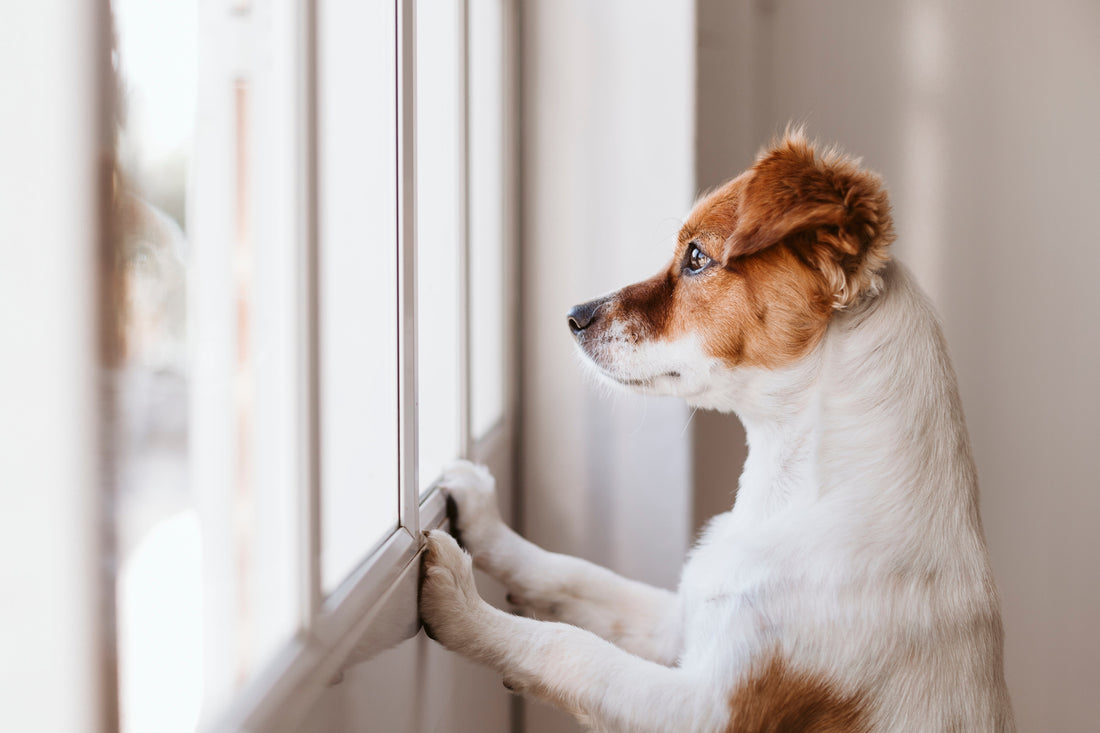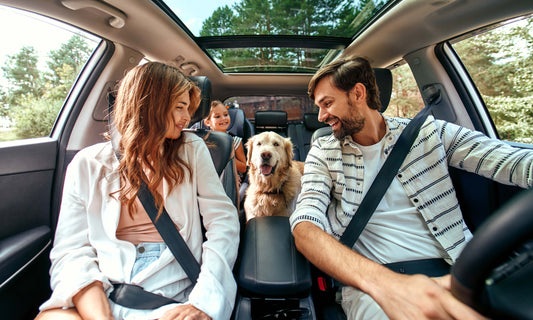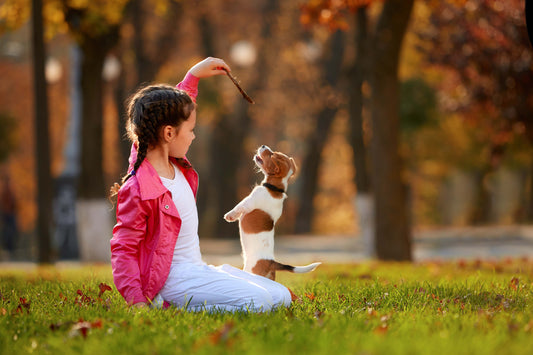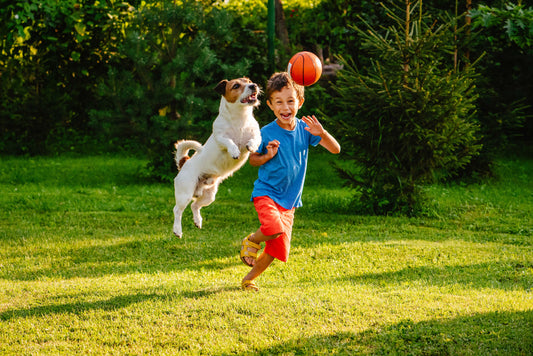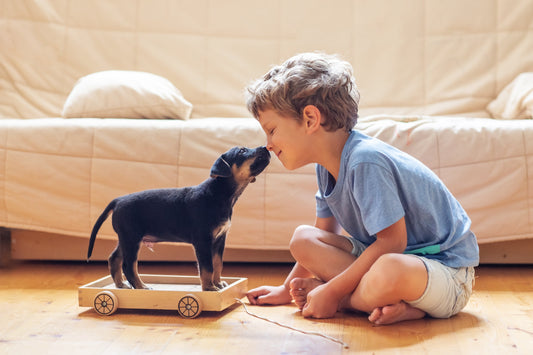Many dog owners experience the stress of their furry friend becoming anxious when left alone. This condition, known as separation anxiety, can be worrisome for you and stressful for them. Recognising and addressing this issue can significantly improve your dog’s wellbeing and your peace of mind. Let’s explore the causes, signs, and solutions to help your furry friend feel confident and calm, even when you’re not around.
What is Separation Anxiety?
Separation anxiety occurs when dogs experience extreme distress and anxiety when left alone or separated from their owners. This condition can lead to a variety of behavioural issues and can be challenging to manage without proper understanding and intervention.
Potential Causes of Separation Anxiety
There are several causes, but for puppies, this starts with their early life experiences. Maybe they were separated from their mom or siblings too young or have been rehomed multiple times in the past. This can create a sense of insecurity, making your canine companion afraid of being left alone again.
Dogs who haven’t been socialised, trained or gradually exposed to being alone may also struggle with independence. This is because they’re overly dependent on their owners for comfort and security. Sometimes, big changes like a new work schedule or moving to a new home can trigger separation anxiety as pups thrive on consistency, and sudden changes can be stressful for them.
Symptoms of Separation Anxiety
So how do you know if your dog is feeling anxious when you leave? Watch for clues such as destructive behaviour. Chewing furniture, scratching doors or tearing up household items might signal your pup trying to relieve stress in not-so-great ways.
Excessive barking, howling, or whining is another common sign. These vocalisations indicate distress, a desire for your return, and a need for reassurance. Next, there are indoor accidents. Even house-trained dogs might have accidents if they’re overwhelmed with stress and panic.
Separation anxiety can also show in pacing and restlessness. This includes the inability to relax, constant circling, or other frantic movements, signs that your furry friend just can’t settle down when alone.
Risk Factors for Separation Anxiety
While any dog can experience separation anxiety, some furry friends might be a little more likely to feel stressed when you’re gone. This could be because of their breed tendencies. For instance, some breeds, like Labrador Retrievers, Border Collies, and German Shepherds, are known for their deep connection and strong attachment to their owners. They might feel the sting of separation more because they love spending so much cuddle time with their favourite people.
Age also plays a part in this puzzle. Young puppies are still learning the ropes of the world, and being alone can feel a bit scary for them. On the other hand, senior dogs might experience changes in their cognitive senses that make them more anxious when left alone.
If your dog has had negative experiences, such as being abandoned, left alone for a long time or going through harsh training methods, they may also develop separation anxiety as a result. Sometimes, underlying health problems and physical discomfort can make separation anxiety worse. If your dog is experiencing chronic pain or has trouble seeing or hearing, it could contribute to their distress in being alone.
Helping Your Dog Feel Secure
Here are some ways to help your furry friend feel comfortable and confident, even when you’re not there.
Gradual Desensitisation
Gradual desensitisation involves slowly getting your dog used to being alone. Slowly increase the duration your dog spends alone, starting with short periods and rewarding calm behaviour with treats and praise. As they become more comfortable, you can lengthen your time away. This method helps build their confidence and reduces anxiety.
Create a Safe Space
Provide a designated area like a crate or a room with familiar comforts to help them feel secure. You can include comfy bedding, their favourite toys and a shirt that smells like you for extra comfort. You can also introduce enrichment games to distract them while you’re away. Explore The Healthy Pet Co. for an extensive range, from treat dispensing toys to engagement with nose work.
Maintain Consistency & Use Positive Reinforcement
Dogs thrive on routine. Stick to a predictable routine for feeding, walks, and playtime to offer structure and reduce anxiety. Positive reinforcement techniques also work wonders. Reward your pup for calm behaviour when left alone. Treats, praise, and toys can help reinforce their ability to stay calm and relaxed in your absence.
Seek Expert Help
For severe cases, collaborate with a professional dog trainer or veterinary behaviourist to create a personalised treatment plan that addresses your furry friend’s needs directly.
Let’s Help Your Pup Overcome Separation Anxiety
Separation anxiety can be frustrating, but with love, patience, and the right approach, you can help your dog overcome it. Understanding the causes, symptoms, and available solutions can significantly improve your dog’s emotional wellbeing and create a more peaceful environment for the whole family.
At The Healthy Pet Co., we’re here for you with expert advice and high-quality products. Explore our website and pet care range to find solutions that work for your furry friend. Remember, a happy and confident dog leads to a wagging tail and a stronger bond for you both!
